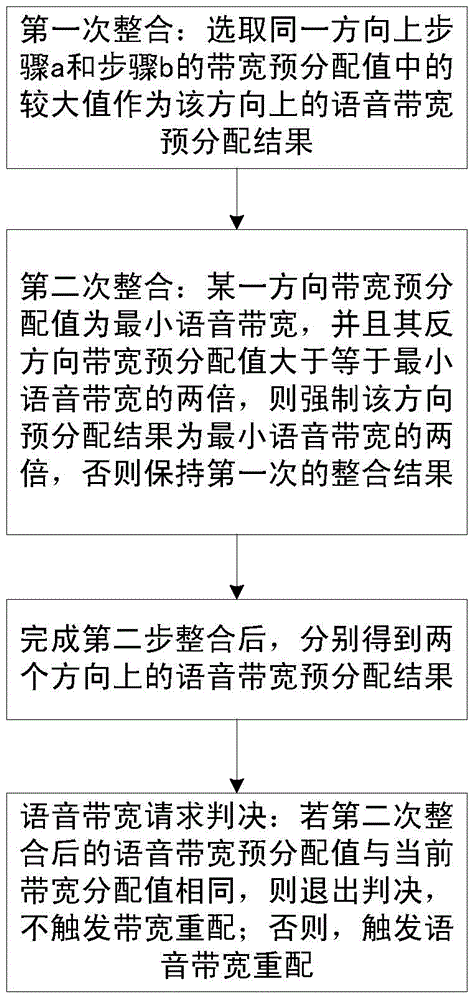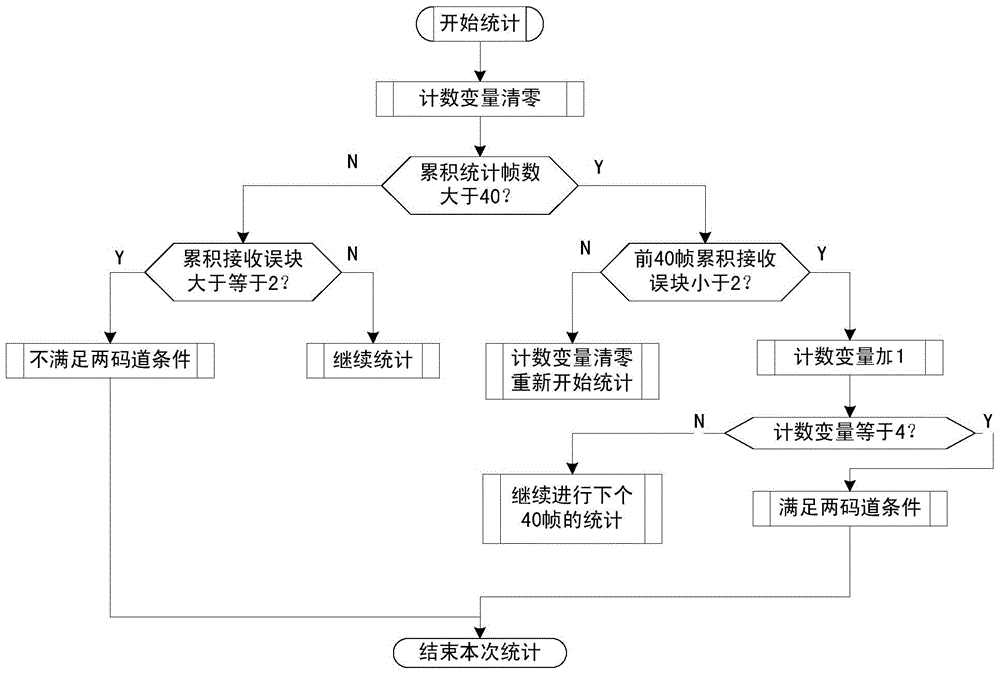Voice bandwidth pre-distribution method and device
A technology of bandwidth allocation and pre-allocation, applied in voice analysis, using the return channel for error prevention/detection, instruments, etc., can solve problems affecting the overall throughput of the communication system, reducing the efficiency of wireless resource usage, and affecting the quality of calls in the downlink direction, etc. , to avoid voice call quality degradation, ensure voice call quality, and reduce voice packet loss rate
- Summary
- Abstract
- Description
- Claims
- Application Information
AI Technical Summary
Problems solved by technology
Method used
Image
Examples
Embodiment 1
[0028] Embodiment 1: The situation where the quality of the two-way channel deteriorates
[0029] The voice service of this embodiment adopts the G729A compression mode, that is, the PCM of 10 ms per frame is compressed into 80-bit voice packets. Since some necessary information needs to be added to the voice packet during transmission, the minimum voice bandwidth value for each frame transmission is taken as 106 bits / frame.
[0030] Assuming that the current uplink and downlink are both in the two-code channel mode, the implementation steps of the voice bandwidth pre-allocation method include:
[0031] Step 1: Periodically detect the length of the voice transmission buffer, and perform bandwidth pre-allocation according to the detection result.
[0032] 1(a), downlink transmission buffer length cycle detection and bandwidth pre-allocation: the base station side detects the number of voice packets to be sent in the base station transmission window every 20 frames (including t...
Embodiment 2
[0046] Embodiment 2: The situation where the quality of the two-way channel becomes better
[0047] In this embodiment, on the basis of Embodiment 1, it is assumed that both uplink and downlink are currently in a multi-code channel mode, and the bidirectional channel quality becomes better. Then the implementation steps of the voice bandwidth pre-allocation method include:
[0048] Step 1: Periodically detect the length of the voice transmission buffer, and perform bandwidth pre-allocation according to the detection result.
[0049] 1(a), downlink sending buffer length cycle detection and bandwidth pre-allocation: when the downlink channel quality becomes better, the downlink voice packet loss is less, and the number of voice packets to be sent in the sending window cache decreases, when JB1 dl ≤3, bwReq1 dl =106, that is, the downlink request bandwidth value is 106 bits / frame.
[0050] 1(b), uplink send buffer length cycle detection and bandwidth pre-allocation: when the u...
Embodiment 3
[0063] Embodiment 3: The situation where the channel quality in one direction is good
[0064] In this embodiment, on the basis of Embodiment 1, it is assumed that both the uplink and downlink are currently in the multi-code channel mode, the quality of the downlink channel is good, and the two-code channel condition is met, but the quality of the uplink channel is poor, and the received block error statistics are greater than the bandwidth error block threshold. . The downlink pre-allocated bandwidth is 106 bits / frame after the first integration, and the uplink pre-allocated bandwidth is greater than or equal to 212 bits / frame after the first integration. In the second integration, it is necessary to force the downlink bandwidth request value to be 212 bits / frame, so as to support feedback on uplink receiving conditions and further ensure the quality of uplink voice transmission.
PUM
 Login to View More
Login to View More Abstract
Description
Claims
Application Information
 Login to View More
Login to View More - Generate Ideas
- Intellectual Property
- Life Sciences
- Materials
- Tech Scout
- Unparalleled Data Quality
- Higher Quality Content
- 60% Fewer Hallucinations
Browse by: Latest US Patents, China's latest patents, Technical Efficacy Thesaurus, Application Domain, Technology Topic, Popular Technical Reports.
© 2025 PatSnap. All rights reserved.Legal|Privacy policy|Modern Slavery Act Transparency Statement|Sitemap|About US| Contact US: help@patsnap.com



